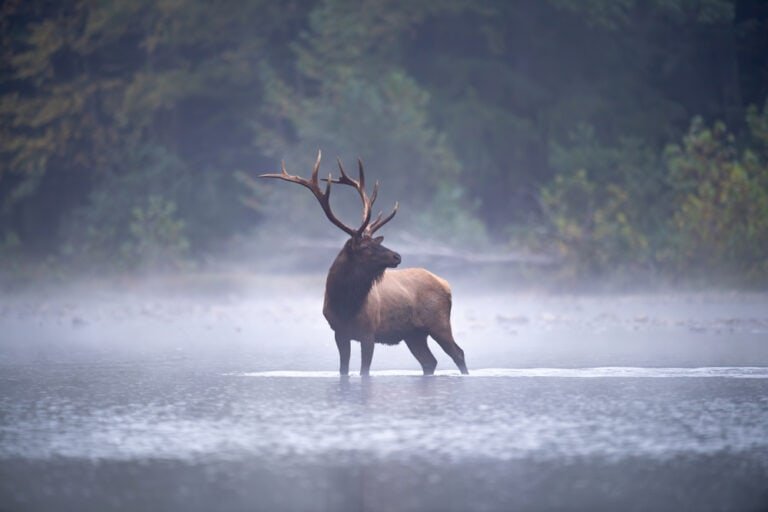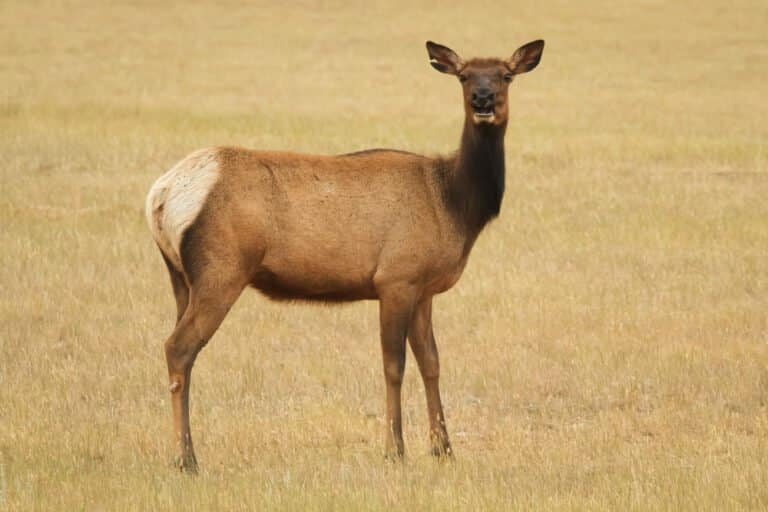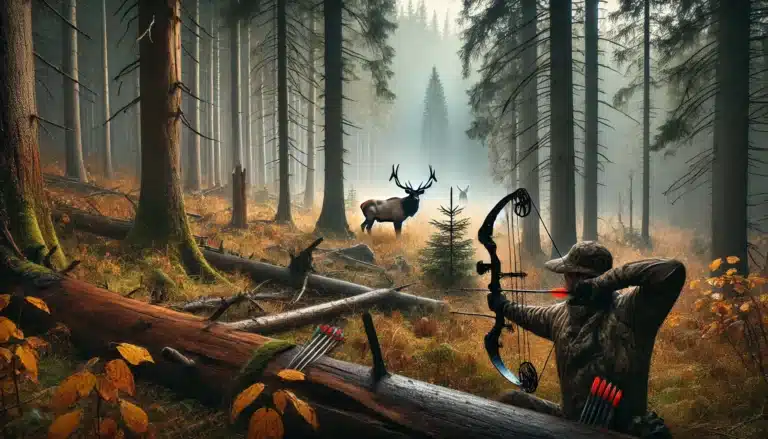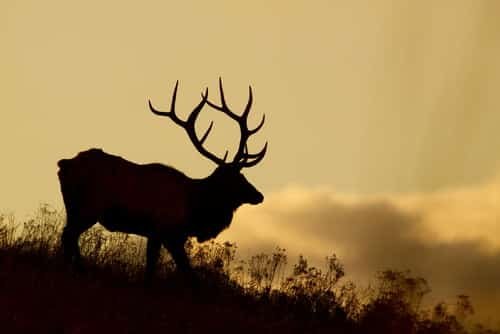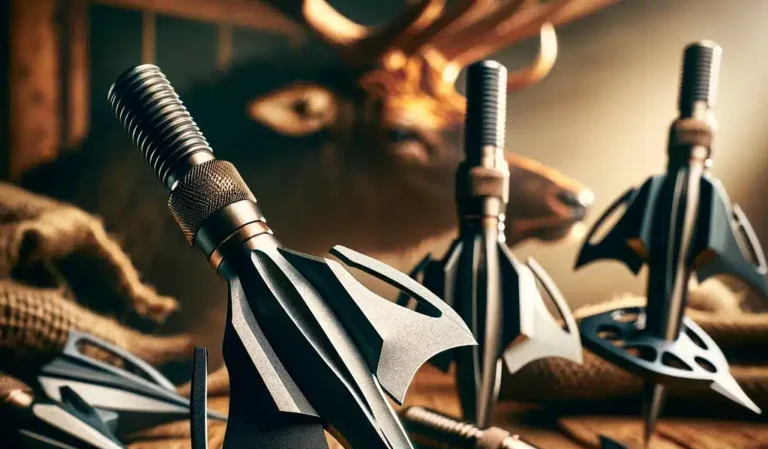Arizona Elk Hunting: Powerful Tips and Strategies for 2025
With its vast and diverse landscapes, Arizona elk hunting is a haven for wildlife enthusiasts and outdoor adventurers. From the iconic Sonoran Desert in the south to the towering peaks of the Colorado Plateau in the north, this southwestern state offers a rich tapestry of ecosystems that support an incredible array of flora and fauna. Within this remarkable backdrop, hunters find themselves immersed in Arizona’s captivating hunting opportunities.
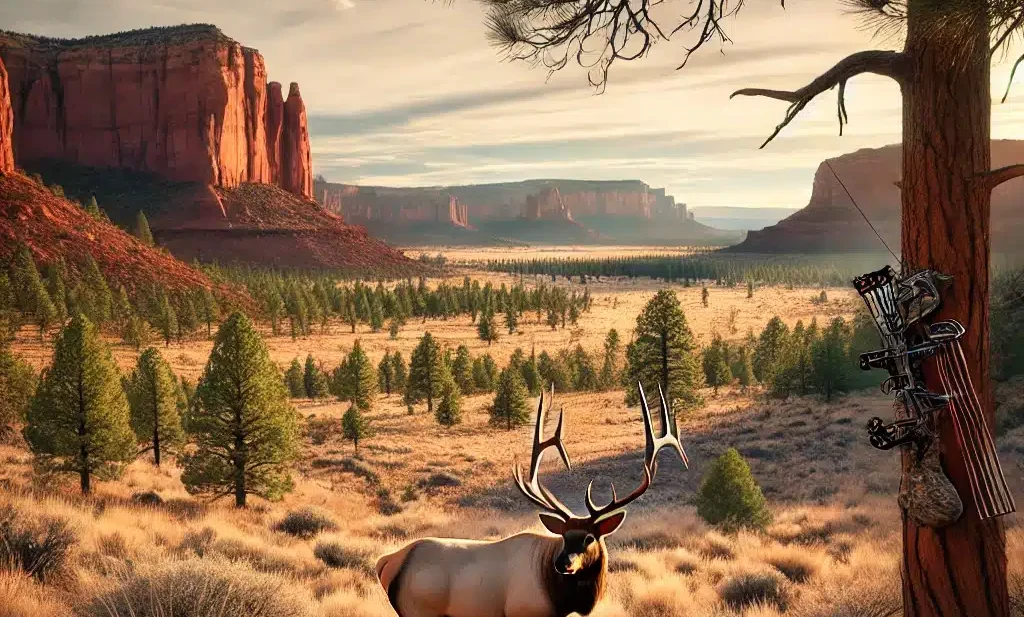
Arizona’s Diverse Wildlife
Arizona boasts an astonishing variety of wildlife species, each adapted to thrive in its unique habitat. The state is home to majestic deer species such as mule deer and whitetail deer, agile predators like mountain lions and bobcats, elusive black bears seeking refuge amidst towering pines, and the pint-sized yet charismatic javelina roaming the arid scrublands.
Additionally, Arizona is renowned for its abundant birdlife, including quails, turkeys, and waterfowl that grace the skies with their vibrant plumage. However, among all these remarkable creatures stands one regal quarry that captures the hearts of hunters across the state: elk.
Elk Hunting – A Challenging Pursuit in Arizona
Elk hunting has earned a well-deserved reputation as one of the most exhilarating hunting experiences one can undertake in Arizona. With their imposing antlers reaching skyward and large stature commanding attention, elk embody grace and power.
Pursuing them demands skillful tactics, patience honed over time spent observing their behavior, and respect for their remarkable resilience amidst rugged landscapes. Hunting elk allows individuals to immerse themselves in nature’s splendor while testing their physical endurance and mental acuity.
It requires careful planning, understanding elk behavior patterns during different seasons, mastery of calling techniques to lure them within range, and the ability to navigate challenging terrain. Elk hunting in Arizona is not merely a recreational pursuit but a quest that pushes hunters to their limits and rewards them with unforgettable memories.
In the following sections, we will explore the world of Arizona’s elk, their habitat preferences, hunting regulations, effective strategies for success in the field, and essential tips for dressing their majestic carcasses. So fasten your boots tightly, adjust your hunting gear, and embark on this enlightening journey into Arizona elk hunting.
Understanding Elk in Arizona
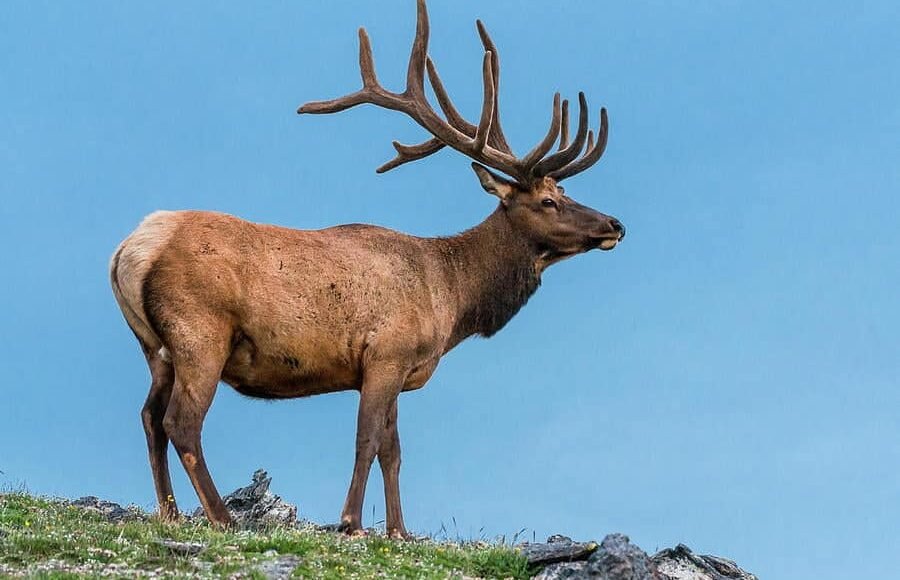
Overview of Elk Species Found in Arizona
Arizona has two distinct elk species: the Rocky Mountain elk and the Merriam’s elk. The Rocky Mountain elk (shown here), named after their mountainous habitat, are larger and more robust compared to the Merriam’s elk. They possess impressive antlers with multiple points and a dark brown coat.
On the other hand, the Merriam’s elk have a lighter coat coloration with more buff-colored patches on their rumps and necks.
Habitat Preferences, Migration Patterns, and Population Estimates
Elk in Arizona thrive across various habitats ranging from ponderosa pine forests to high-elevation grasslands. They require access to ample forage, water sources, cover, and rugged terrain for security.
Durin Elkcally inhabits higher elevations with lush vegetation while seeking cooler temperatures during summer. However, as winter approaches, they migrate to lower elevations for milder climates and better access to food sources.
Weather patterns and available resources influence their seasonal migrations. Arizona’s elk population estimates fluctuate annually due to ecological factors such as droughts or predator-prey dynamics.
However, the estimated population of Rocky Mountain elk hovers around 30-35 thousand individuals, while Merriam’s elk population is estimated at roughly 5-7 thousand. These population estimates are crucial for wildlife management officials when determining hunting quotas.
Elk Behavior: Rutting Season and Vocalizations
Rutting season is one of the most fascinating aspects of an elk’s behavior cycle that entices hunters. This period, usually occurring in early autumn, is when bull elk compete for dominance to mate with receptive females.
Bulls engage in intense displays of dominance, emitting bulges reverberating through the landscape. Bugling plays a crucial role in establishing hierarchy and attracting cows.
These vocalizations can range from deep guttural sounds to high-pitched whistles. Apart from bugling, elk also use various body postures and gestures to communicate during the rut.
Bulls aggressively spar with their antlers as a display of strength and dominance. Cows emit soft mews and chirps throughout the year but become more vocal during the rutting season to attract bulls or communicate with their calves.
Understanding elk behavior is paramount for hunters as it enables them to interpret these signals accurately while formulating effective hunting strategies. It allows them to capitalize on the heightened activity and vulnerability displayed by elk during this exciting period of courtship and competition.
Hunting Regulations and Licensing

Explanation of the draw system for obtaining an elk tag in Arizona
The draw system in Arizona is a fair and efficient way to allocate elk tags. It ensures that hunting opportunities are distributed among hunters while maintaining sustainable harvest levels to conserve the elk population. Interested hunters must apply for a hunt permit tag through a lottery-based system administered by the Arizona Game and Fish Department.
The application period typically opens in February, and applicants can submit their preferences for specific units, seasons, and types of hunts. The draw process considers hunter preference points, bonus points, and random selection to determine successful applicants.
Different types of tags available (bull, cow, archery-only, youth hunts)
Arizona offers different types of elk tags to cater to various hunting preferences and conservation objectives. Bull tags allow hunters to pursue mature male elk known for their impressive antlers. Cow tags offer a chance to hunt female elks, essential for managing population numbers only. Tags are specifically designated for hunters who prefer the challenge of bowhunting and provide exclusive access during archery seasons. Additionally, youth hunts are available as special opportunities designed to introduce young hunters to the thrilling world of elk hunting.
Season dates, bag limits, and weapon restrictions
Each hunting unit in the vast wilderness of the zona has specific season dates that may vary depending on management strategies and overlapping hunt areas. Generally speaking, archery seasons open early, late August, or early September, when the bulls are still bugling during the rutting season.
Rifle seasons usually follow later in September or October when elks gather in larger herds post-rut. Bag limits vary between bull hunts (typically limited to one bull per season) and cow hunts (permitting multiple cows).
Weapon restrictions differ depending on the hunt type, with archery hunts limited to longbows, compound bows, or crossbows. In contrast, rifle hunts allow firearms of a specific caliber determined by state regulations. By adhering to these hunting regulations and licensing requirements, hunters can partake in the exhilarating experience of elk hunting in Arizona while contributing to sustainable wildlife management practices.
Preparing for the Hunt
Researching hunting units: terrain features, vegetation types, and historical success rates
When preparing for an elk hunt in Arizona, it conducts thorough research on the various hunting units within the state. Each is a crucial unit because it has unique terrain features and vegetation types directly impacting elk behavior and movement patterns. For instance, some units may consist of dense forests with ample cover, while others may have more open landscapes with sparse vegetation.
By studying topographic maps and satellite imagery, hunters can identify elk hotspots such as feeding areas, water sources, and bedding grounds. Additionally, exploring historical success rates can provide valuable insights into which units have consistently yielded successful hunts.
Physical conditioning tips to navigate rugged landscapes during the hunt
Elk hunting in Arizona often involves traversing steep slopes and rugged terrains that demand a high level of physical fitness. Adequate preparation through conditioning exercises is essential to ensure a successful and enjoyable hunt. Incorporating cardiovascular workouts such as hiking or running uphill helps improve endurance levels required for long hours spent pursuing elk on foot.
Strength training exercises targeting leg muscles like squats and lunges enhance stability and agility for navigating uneven terrain. Additionally, core-strengthening exercises like planks or mountain climbers contribute to overall balance and stamina during demanding treks.
Essential gear checklist for a successful elk hunt (clothing, optics, firearms)
To maximize your chances of a fruitful elk hunting expedition in Arizona’s diverse landscapes, having the right gear at your disposal is imperative.
Clothing: Dressing appropriately for variable weather conditions is paramount. Layered clothing provides flexibility based on temperature fluctuations throughout the day. Insulating layers like fleece or wool garments should complement a moisture-wicking base layer with a waterproof outer shell that protects against rain or snow.
Optics: High-quality binoculars are indispensable for spotting elk in the vast wilderness. Choose models with sufficient magnification and a wide field of view to scan large areas effectively. A spotting scope can also be advantageous for detailed observation.
Firearms: Selecting the right firearm is crucial for a successful elk hunt. Choose a rifle chambered in an appropriate caliber, such as .270 Winchester or .30-06 Springfield, known for their effectiveness on elk-sized game. Please familiarize yourself with your chosen firearm and practice shooting at various distances to ensure accuracy when it matters most.
In addition to these essentials, other recommended gear includes comfortable and sturdy boots, trekking poles for stability during challenging hikes, a reliable GPS device or compass for navigation, a high-quality backpack with sufficient capacity to carry essential supplies like water and food, field dressing equipment, scent control products, and appropriate safety gear like blaze orange clothing or vests. Remember that being well-prepared enhances your chances of success and contributes to a safer and more enjoyable hunting experience amidst Arizona’s rugged landscapes.
Tactics and Strategies for Elk Hunting
Spot-and-Stalk Technique: Using Binoculars to Locate Elk Herds Before Making a Move
One of the most effective tactics in elk hunting is the spot-and-stalk technique, which involves glassing vast landscapes with quality binoculars to locate elk herds before making a move. By patiently scanning open meadows, forest clearings, and ridgelines, hunters can spot elk from a distance without disturbing their natural behavior.
It is crucial to look for movement or any shape that stands out among the surrounding vegetation. Once an elk herd is spotted, careful observation will reveal their patterns and feeding habits, helping hunters plan their approach.
Calling Techniques: Understanding Different Calls (Bugles, Cow Calls) to Attract Bulls or Locate Cows
Mastering calling techniques is essential for successful elk hunting. Understanding different calls, such as bugles and cow calls, allows hunters to attract bulls or locate cows to increase their chances of encountering the game. Bugling is often used during the rutting season as it imitates the haunting sound made by bull elks during dominance displays and mating rituals.
A sequence variation, “the challenge,” mimics aggressive bugling that can provoke responses from other bulls in the area. On the other hand, cow calls are used to simulate cow elk vocalizations, enticing both bulls and cows who may be curious or seeking companionship.
The Art of Mimicking Cow Sounds Effectively
Mimicking cow sounds effectively requires practice and understanding the nuances of cow vocalizations. The goal is to accurately replicate mews, chirps, estrus calls, and assembly sounds made by female elks throughout different situations.
Modulating these calls’ volume and duration of others can create a sense of authenticity that elicits responses from nearby elk. It’s crucial to note that cow calls can vary depending on the time of year and the specific behavior being imitated, so familiarizing yourself with these variations will greatly enhance your effectiveness in the field.
Using Decoys to Enhance Calling Strategies
Decoys are tools that can significantly enhance calling strategies during elk hunting. They add visual stimuli to complement vocalizations and make approaching elk feel more at ease. Decoys can imitate cows and bulls and are available in various designs, including full-size replicas or collapsible models for convenient transport.
You strategically place a decoy near your calling to track curious elk seeking companionship or challenges. Successful utilization of decoys involves positioning them within your shooting range while paying attention to wind direction and ensuring they are visible from different angles to increase their effectiveness.
Field Dressing and Meat Care
A Step-by-Step Guide on Field Dressing an Elk
Field dressing is a critical skill that ensures the preservation of meat quality and reduces the weight to be packed out. After a successful hunt, it is handled with care and efficiency. Once the animal is down, start placing it on its back with its legs spread apart to provide stability.
Begin by making a long cut from the brisket area up towards the sternum, being cautious not to puncture any organs or intestines. Next, carefully remove the entrails, starting at the diaphragm and working towards the pelvic area.
To prevent meat contamination, use a sharp knife or gutting tool to keep incisions precise and controlled. Make sure to inspect all organs for any signs of disease or abnormalities.
Once completed, rinse the body cavity with clean water and pat dry using a clean cloth or paper towel. This thorough field dressing process will help maintain meat quality during transportation.
Tips on Quartering an Elk Efficiently for Packing Out
After field dressing an elk, quartering becomes necessary when packing out in challenging terrains or transporting large quantities of meat over long distances. Proper quartering techniques ensure manageable loads and minimize spoilage risks.
Remove each leg at its joint using a sturdy bone saw or knife to begin quartering. The shoulder cuts should be made between the scapula (shoulder blade) and upper arm bone while keeping close to these bones for easier removal.
The hindquarters can be separated from the pelvis by cutting through the ball joint located at the hip. Remember to utilize leverage by positioning yourself accordingly, ensuring safe and controlled cuts.
Once all four quarters are detached, consider further subdividing them into more manageable portions for packing out. This process can be done by separating each quarter into primal cuts such as roasts, steaks, and stew meat.
Proper Meat Care Techniques
Prioritizing care immediately after quartering an elk to serve its quality and taste is important. Here are some crucial tips to follow:
- Cooling: Properly cool the meat as quickly as possible to prevent spoilage. Hang quarters in a shaded area or use a portable cooler with ice or ice packs.
- Avoid Contamination: Use clean tools and gloves to keep the meat clean throughout the process. Please avoid contact with dirt and contaminants that could affect its taste and safety.
- Aging: Consider aging the meat if time allows. Aging improves tenderness and enhances flavor complexity. This can be done by refrigerating quarters for several days before processing.
- Packaging: once processed into desired cuts, package the meat securely in airtight plastic bags or vacuum-sealed pouches to prevent freezer burn.
- Freezing: When freezing elk meat for long-term storage, ensure it is properly labeled with dates and cut types for easy later identification.
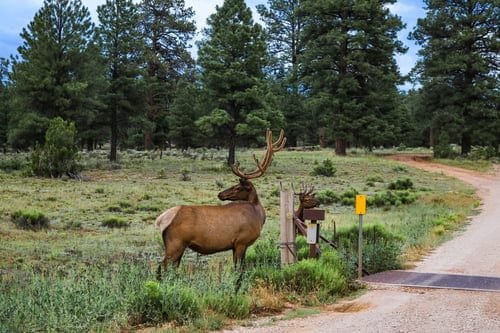
Conclusion
Field dressing an elk after a successful hunt requires careful attention to detail and efficient techniques to preserve the meat’s quality. By following a step-by-step guide for field dressing, quartering the animal for packing out, and implementing proper meat care techniques, hunters can ensure that their hard-earned harvest is enjoyed to its fullest potential.
Every step from field to freezer contributes to the overall satisfaction of a successful elk hunt, and with the right knowledge and preparation, hunters can relish in the joy of providing nourishment for themselves and their loved ones. Happy hunting!

